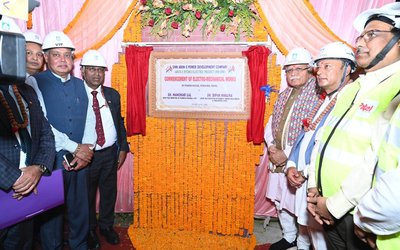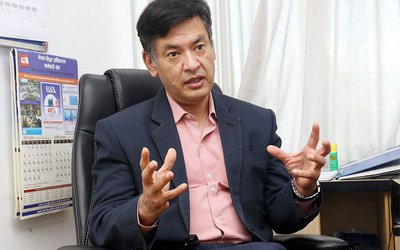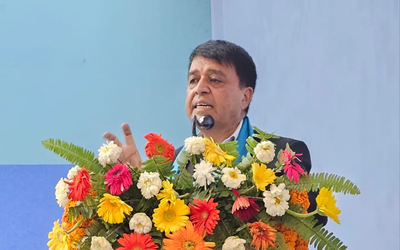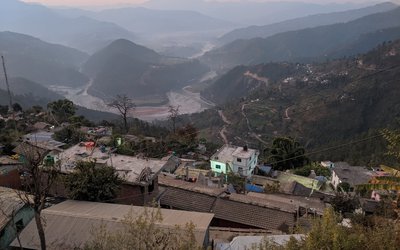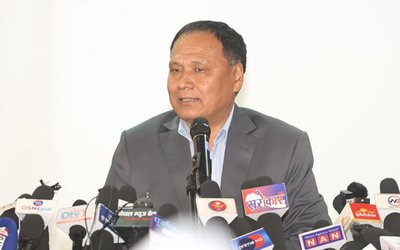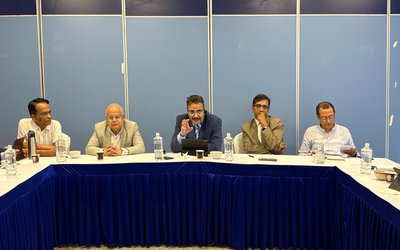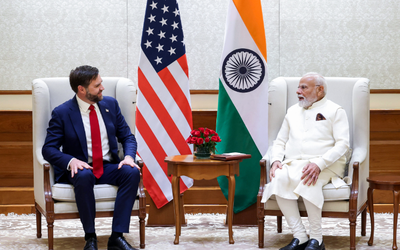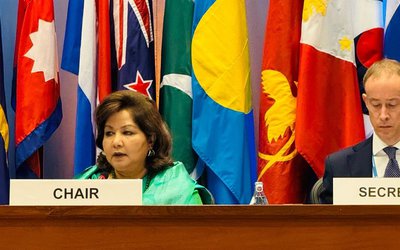
At a time when the construction of transmission lines and hurdles due to land compensation process, tree felling and inefficiency of contactors have been facing a series of obstacles, the Nepal Electricity Authority (NEA) has made a major breakthrough in recent months in accelerating the pace of construction and completion of ongoing projects.
The completion of the 220 kV Matatirtha Substation, the largest in the Kathmandu Valley, is a major achievement. Linked to the 220 kV Trishuli-Kathmandu and 220 kV Marsyangdi Corridor, the substation is the largest to date. Upon completion, Lapsiphedi Substation, which is being completed at a fast pace, will be the largest with 400 kV transmission line connection.
As his promise to accelerate the construction of transmission line and substation in his second term, the completion of Matatirtha is a milestone for Kul Man Ghising, Managing Director of Nepal Electricity Authority (NEA).
By spending a lot of time in field inspection, observation and site visit, Mr. Ghising has been able to accelerate the pace of construction. Stalled for almost a decade, the construction of the 400 kV Hetauda-Inruwa Transmission Line project is moving at a faster pace with the aim to complete the Inaruwa-Dhalkebar section within a few months.
After his recent site visit, MD Ghising also said that the Barabishe substation is also nearing completion. The completion of this substation will help to evacuate the 110 MW power from Middle-Bhotekoshi.
Matatirtha Substation
The Nepal Electricity Authority (NEA) has finished construction of the Matatirtha 220-132 kV substation in Chandragiri municipality, Kathmandu, as part of the Masryangdi-Kathmandu transmission line project.

This substation will provide electricity to the Kathmandu valley for the hydroelectric projects in the Trishuli and Masryangdi river catchment areas, and it will also enhance the integrated electricity system in the country. The substation has a capacity of 320 MVA. Matatirtha is now the largest substation hub for electricity supply in the Kathmandu Valley.
According to Ghising, Managing Director of the NEA, the construction of the Matatirtha substation has been completed, and all equipment, including power transformers, has been successfully tested.
To charge and operate the Matatirtha substation at 220 kV, a 220 kV Trishuli 3B hub or Markichoke substation should be built. However, it appears that the construction of the Markichoke substation will take some time. According to the speaker, the Matatirtha substation will be charged at 220 kV.
The infrastructure for 220 kV has been prepared to supply electricity to the Kathmandu valley. After the electricity supply from this substation, the electricity supply in the Kathmandu valley will be more sufficient, reliable, and of higher quality. Additionally, the country's integrated electricity system will be strengthened.
The Masryangdi-Kathmandu 220 kV double circuit transmission line has been completed from the Markichoke substation at Ambukhairni in Tanahun to Kathmandu. The purpose of this transmission line is to bring power from the Masryangdi river watershed area to the Kathmandu valley. The transmission line was charged to 132 kV in June 2079 and is now operational. Additionally, a 220-132 kV substation is currently under construction at Markichoke as part of the project.
The Trishuli-Kathmandu 220 kV transmission line has been completed and is now operational. It brings electricity from the Trishuli river watershed area to the Kathmandu Valley. The Masyangdi-Kathmandu and Trishuli-Kathmandu transmission lines have been connected to a bridge at Badbhanjyang and integrated into the Matatirtha substation through a multi-circuit line.

Tara Prasad Pradhan, the deputy executive director of the authority's project management directorate, stated that electricity from Masryangdi and Trishuli will be supplied to the Kathmandu valley through the Matatirtha substation via 132 kV to Suchatar, Chobhar, and other areas. Additionally, the electricity from Matatirtha can be transferred to Hetaunda through a 132 kV transmission line.
The authority is building a 132 kV substation in Chobhar. The construction of the 132 KV line from Matatirtha to Chobhar has been completed. Executive Director Pradhan stated that they have signed the contract agreement for the construction of a 132 kV underground transmission line from Chobhar to Patan in Lalitpur and a 132 kV substation in Patan.
The contractor who was awarded the contract for the construction of Matatirtha and Markichoke substations under the Masryangdi-Kathmandu transmission line project had their contract canceled due to unsatisfactory performance. A new contract was issued in December 2020 to complete the remaining work.
The project is being funded by the Nepal government, authorities, and a concessional loan from the Asian Development Bank. The estimated cost of the two substations is approximately Rs 2 billion.

Keshab Poudel
Poudel is the editor of New Spotlight Magazine.
- KUL MAN GHISING: Bowing Down To The People
- Apr 13, 2025
- POLITICAL VIOLENCE: Culture of Impunity
- Apr 11, 2025
- PM OLI MEETS PM MODI: No Progress
- Apr 09, 2025
- PM OLI’S THAILAND VISIT: Flip Flop
- Apr 08, 2025
- FM Dr. Deuba’s India Visit: Mission Aborted
- Mar 26, 2025
